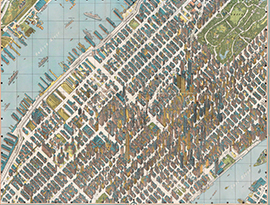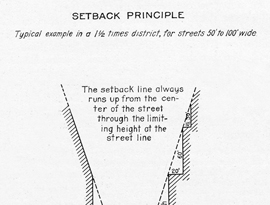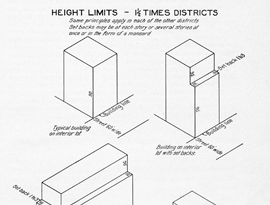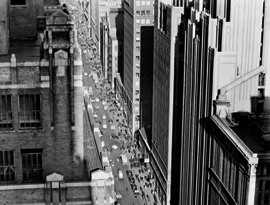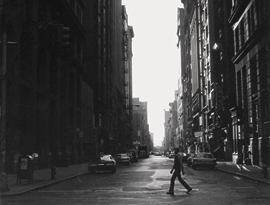Before
The Grid
The
1811 Plan
BUILDING
THE GRID
19TH-CENTURY
DEVELOPMENT
20th century–
Now
living on
the grid
other
Grids
Modern Reforms, 20th Century—Now
Manhattan Monumentality
Frederick Law Olmsted, the designer of Central Park and the grid’s most influential critic in the 19th century, faulted its uniformity and failure to accommodate monumental buildings. “There are numerous structures, both public and private, in London and Paris, and most other large towns of Europe, which could not be built in New York, for want of a site of suitable extent and proportions. Read More There is no place under the system in New York where a stately building can be looked up to from base to turret, none where it can even be seen full in the face and all at once taken in by the eye; none where it can be viewed in advantageous perspective.” Olmsted could not have foreseen that as the city evolved, it would develop its own form of monumentality.
Manhattan’s defining 20th-century monumentality was based on three elements: the street wall, extreme height, and the endless vista along the grid’s long streets and avenues. Show Less
Meticulously drawn in a highly refined axonometric projection, Hermann Bollmann’s 1962 bird’s-eye view of New York… Read More
Before 1916 the grid could be extended straight up into the sky along the boundary lines of the streets and lots. Read More
Before 1916 the grid could be extended straight up into the sky along the boundary lines of the streets and lots. Read More
The place-making character of the zoning law, applied to the grid’s foundation document of wide avenues and narrow cross streets… Read More
When we build a structure in the countryside, it becomes an object in the landscape. Read More

